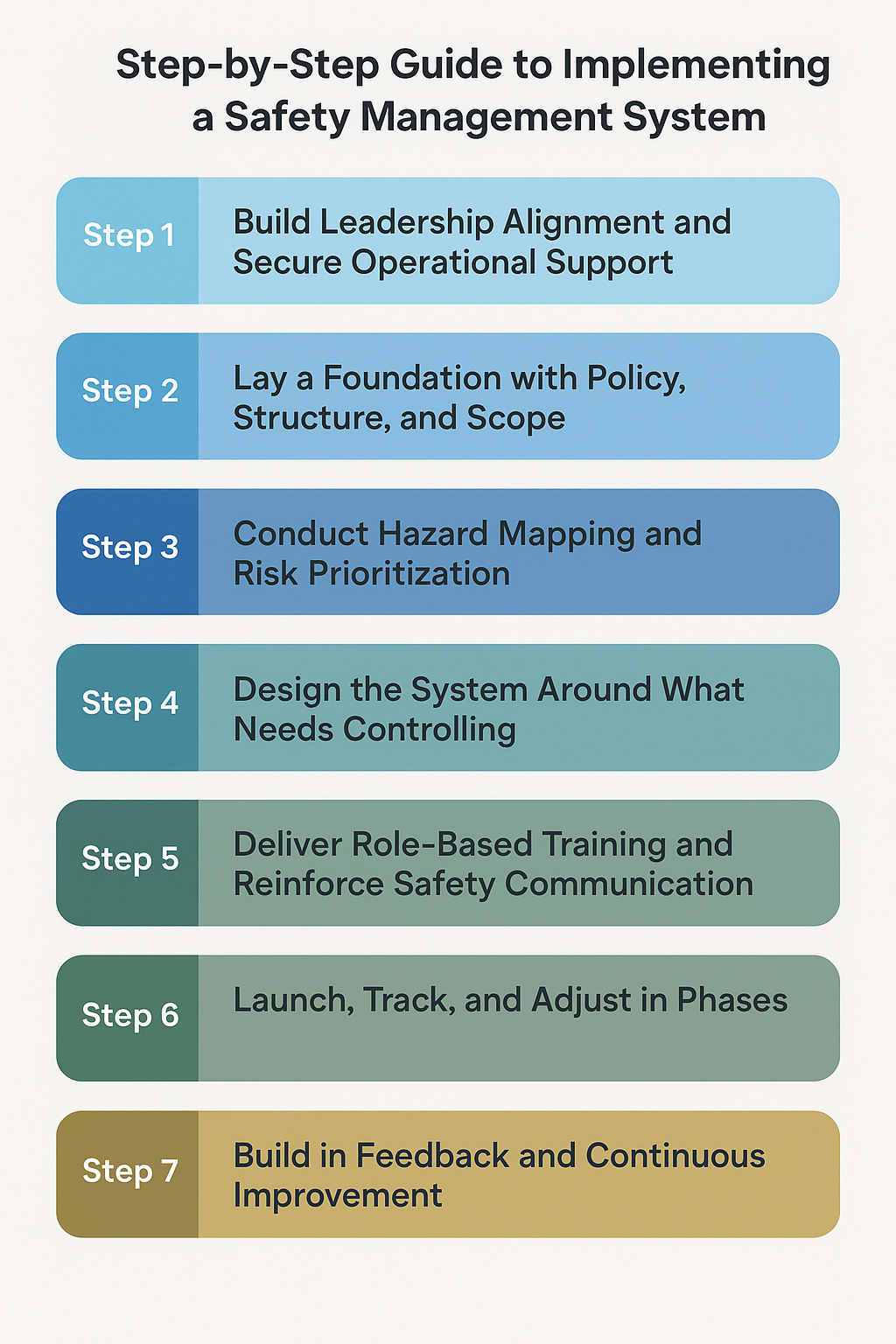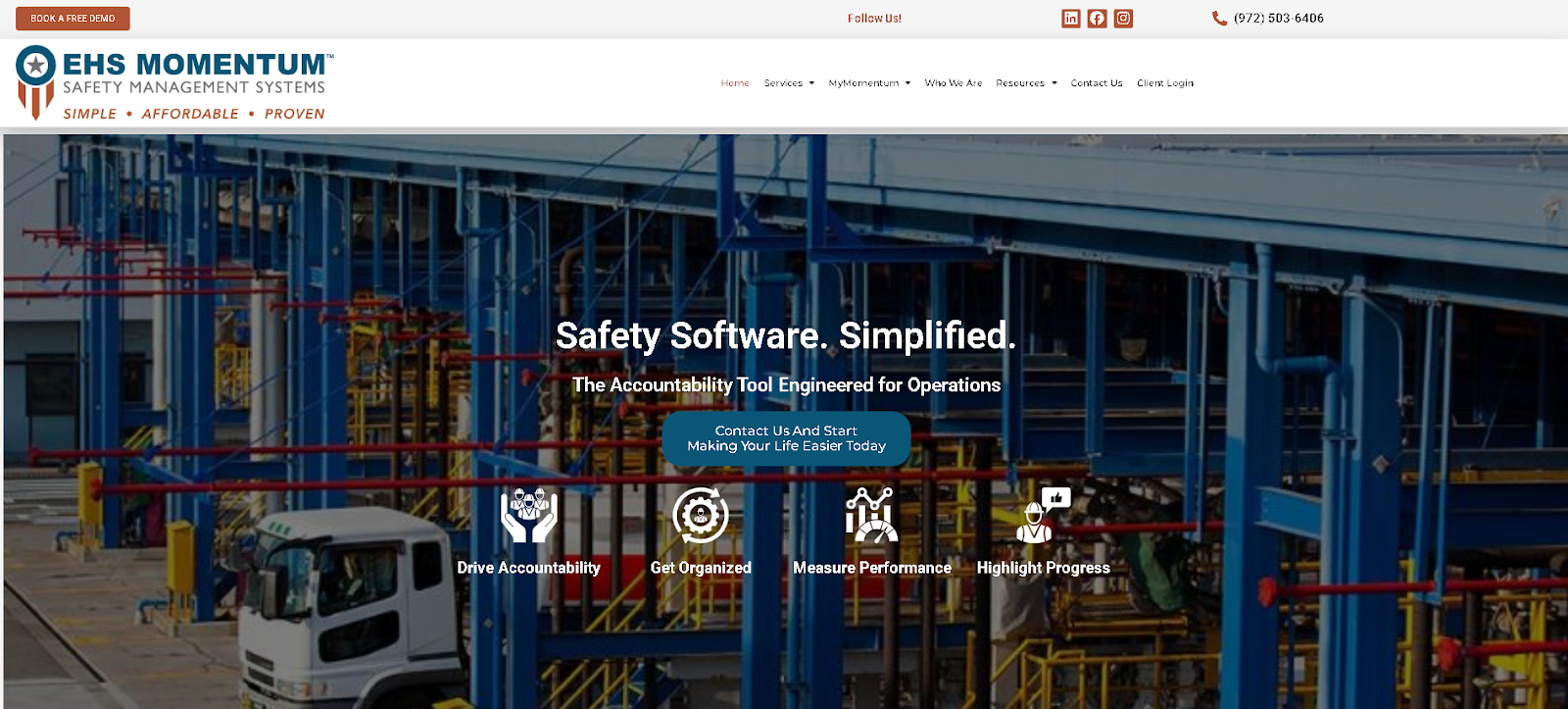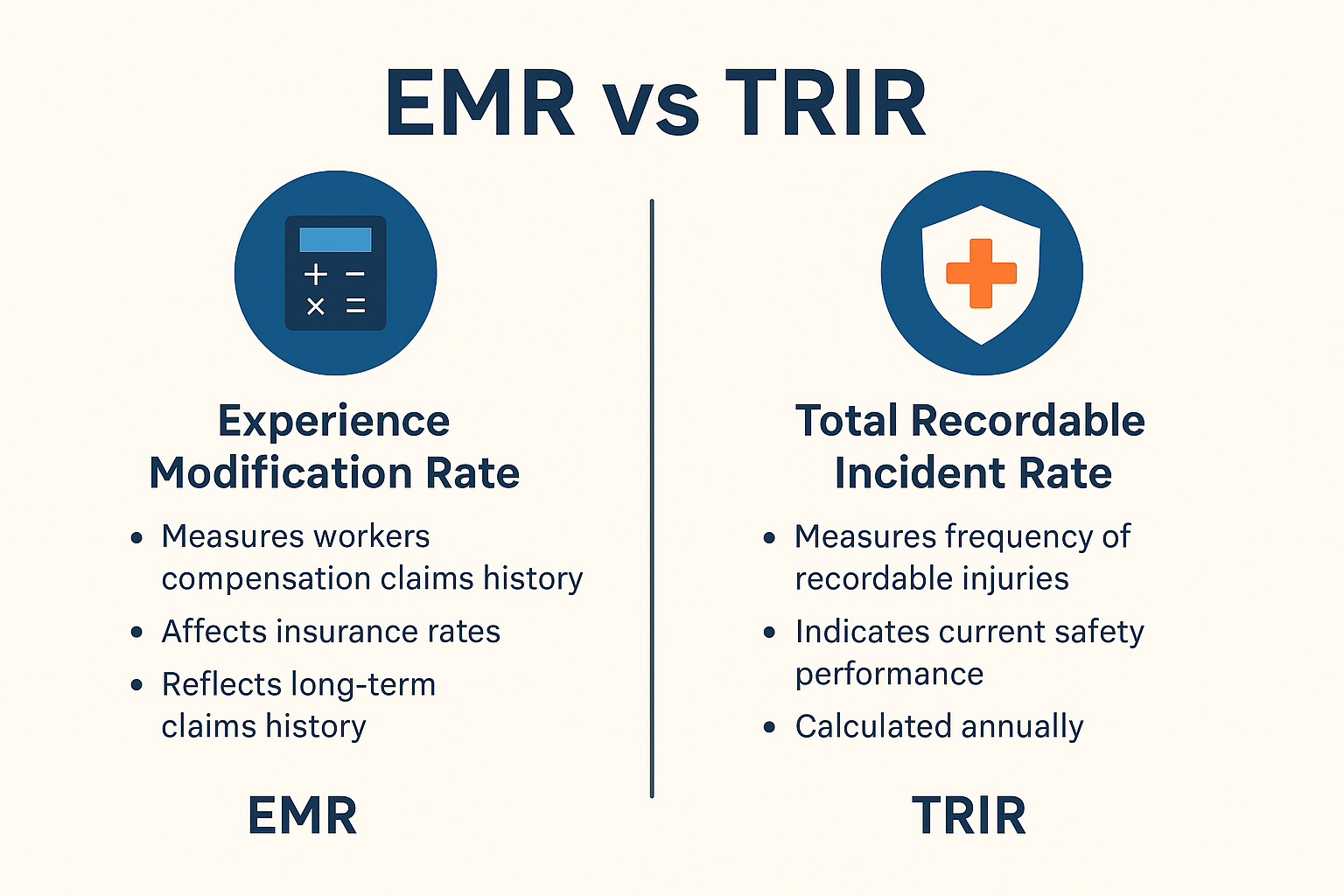Reactive fixes don’t build safer workplaces. When injuries, near-misses, or regulatory gaps surface, it’s often a sign that the organization needs structure, not just Band-Aids.
That’s where a safety management system makes the difference.
With this system, you can create a framework to help you identify hazards, conduct risk assessments, and set long-term safety goals.
However, knowing what it is and implementing it are two different things. So if you need guidance on how to implement a safety management system that scales well, this article has got you covered.
What Is a Safety Management System?
A safety management system (SMS) is a structured approach that helps organizations stay ahead of risks, protect their people, and meet compliance standards.
It combines documented policies, clear procedures, and regular reviews so you can identify hazards, manage risks, and keep safety front and center every day, not just during audits.
A well-designed SMS includes four key elements:
- Safety policy: Your organization’s commitment to maintaining a safe workplace
- Safety risk management: The process of identifying hazards, evaluating risks, and implementing controls
- Safety assurance: Measuring the effectiveness of your safety risk controls and processes over time
- Safety promotion: Building knowledge through training, effective communication, and visible leadership support
Understanding the core elements of a safety management system is one thing, but putting them into motion across your operations is another. So, how do you take those principles and bring them to life in your workplace?
Let’s find out.
How to Implement a Safety Management System: A Practical Step-by-Step Guide

Launching a safety management system isn’t about dropping a binder of rules on someone’s desk, but creating an operational framework that drives decisions, shapes culture, and supports real-time action.
Here’s how to roll out a system that’s not only compliant but truly effective.
Step 1: Build Leadership Alignment and Secure Operational Support
No safety system works in isolation. It needs real buy-in from executives, site leads, and frontline supervisors.
The first step is aligning leadership around a shared understanding of the “why” behind the system. This involves:
- Agreeing on the role safety plays in business continuity and culture
- Setting shared expectations for engagement and accountability
- Identifying key decision-makers and influencers who will champion the system
Without this step, even the best-documented plans fall flat in execution.
Step 2: Lay a Foundation with Policy, Structure, and Scope
Next, establish the bones of the system.
This foundation includes a concise safety policy that reflects your organization’s values and intent and a framework for roles, responsibilities, and reporting relationships. It should also define the scope of the program, or the departments, processes, and sites that it covers.
Make sure, though, to keep it realistic. Overreaching early can lead to administrative overload and burnout. Remember that the goal is a clear, usable structure that reflects how work is actually done.
Step 3: Conduct Hazard Mapping and Risk Prioritization
Before you can manage risk, you need to understand it.
This step focuses on identifying the activities, locations, or processes where workplace injuries, near-misses, or compliance failures are most likely to happen.
To facilitate this, use direct observations, worker input, and existing records to map hazards. Then apply a structured tool like a risk matrix to rank and prioritize.
Step 4: Design the System Around What Needs Controlling
Now it’s time to put controls in place. Focus on:
- Standard operating procedures (SOPs) for key risk areas
- Inspection checklists and equipment verification
- Emergency response protocols
- Systems for reporting and tracking safety-related events
Each control should be documented, clearly assigned, and auditable. Make it easy to follow, but hard to skip.
Step 5: Deliver Role-Based Training and Reinforce Safety Communication
Training isn’t one-size-fits-all. Focus on who needs to know what, and when.
For example, new employees may need a full-onboarding program. Seasoned operators might need updates on new equipment or process changes. Supervisors need tools for coaching and oversight.
Training should also be supported by ongoing communication, such as visuals, reminders, and meetings that reinforce expectations and keep safety concerns top of mind.
Step 6: Launch, Track, and Adjust in Phases
Instead of going live with everything at once, roll out in stages. Start with departments or sites that are ready and high-impact.
Use simple metrics, like inspection completion, hazard closure rates, or near-miss reporting frequency, to track effectiveness early. Regular reviews and corrective actions will also help fine-tune your system and show employees that input leads to action.
Similarly, design it so that the system grows as your organization grows. After all, what works at 50 employees may need revisiting at 200.
Step 7: Build in Feedback and Continuous Improvement
Finally, treat your SMS like a living system. Just because your system has gone live does not mean it’s already done.
You need to incorporate feedback loops to:
- Capture real-world performance data
- Solicit worker input on what’s working (and what isn’t)
- Adjust training, processes, or policies based on actual outcomes
Aiming for continuous improvement helps create a more resilient, informed, and adaptable organization, not just one built to meet compliance.
Implementation Pitfalls That Undermine Safety Programs
Many organizations jump into implementation with enthusiasm, only to find their system stalls, gets ignored, or fails to reduce workplace incidents over time.
Here are some of the most common reasons why safety programs break down and what you should look out for.
Lack of Leadership Ownership
A successful safety management system requires visible, ongoing commitment from upper management and senior leadership.
When executives treat safety only as a checklist rather than a business priority, it becomes harder to allocate resources, set expectations, and create a safe working environment that employees trust.
Rushed or Disconnected Risk Assessments
Effective risk assessment isn’t something you do once.
It must be a living, iterative part of managing safety risks, using data, observations, and input from the field to identify potential hazards and update controls continuously.
Organizations that treat risk evaluation as a one-time event often fail to control hazards or meet evolving regulatory compliance standards.
Inconsistent Training and Communication
Without targeted employee training, even the best-designed safety protocols won’t be followed. Training must be practical, relevant to specific requirements, and repeated regularly, not just during onboarding.
Equally important is clear communication about expectations, procedures, and how incident reporting works in day-to-day operations.
Overcomplicating the System
Complexity often kills momentum. And a system that’s hard to use, loaded with jargon, or detached from real workflows becomes a burden, not a tool.
A truly effective system uses a systematic approach that mirrors how people work, which keeps things intuitive, flexible, and focused on real-world outcomes.
Failing to Treat It as an Ongoing Process
Safety isn’t a one-time project.
To succeed, a safety management system must be maintained like any other core operation, with regular reviews, accountability checks, and a culture of continuous improvement.
Ignoring the Human Element
Safety isn’t just about documents and dashboards. It’s also about people, trust, and shared knowledge.
Without involving employees, gathering feedback, and empowering frontline teams, even the most compliant systems will struggle to build a meaningful safety culture.
Recognizing these pitfalls early can make the difference between a plan that fades and a system that truly protects your people, your workplace, and your reputation.
If you’re seeing signs of stalled progress or are not sure where to start, this is exactly where external guidance can help.
Optimize Your Safety Management System Implementation with EHS Momentum

Building a robust safety management system takes structure, careful planning, and the right partner to guide the implementation process.
That’s where EHS Momentum comes in.
We’re an Environment, Health, and Safety (EHS) consulting firm that helps businesses move from reactive fixes to operational systems that actually work. Whether you’re just getting started, managing growth, or revamping your safety department, we bring the experience, tools, and templates to help you succeed.
What We Offer
- The Momentum Roadmap™, which is a proven, step-by-step approach to building a compliant, sustainable management system
- Mobile tools like MyMomentum to track audits, train workers, and respond to safety concerns in real-time
- OSHA-compliant frameworks to help you align your SMS with federal regulations and modern safety standards
- Expert guidance to help identify areas for improvement, mitigate risks, and reduce workplace injuries
Start your EHS journey with confidence. Book a demo to see how we can help you design a system that works and evolves.
FAQs About How to Implement a Safety Management System
How do you set up a safety management system?
Setting up a safety management system starts with a clear safety policy, leadership alignment, and hazard identification.
It requires building procedures, assigning roles, and establishing metrics to track effectiveness. You’ll also need to provide training, allocate resources, and embed feedback loops for continuous improvement.
How do you implement process safety management?
Implementing process safety management involves evaluating high-risk operations, especially where chemical or mechanical hazards exist.
It also includes developing clear protocols, training programs, and a risk management structure to reduce the chance of major incidents and protect workers and the public.
What are the 4 components of a safety management system?
The four core components are:
- Safety policy: Declaring the organization’s commitment
- Safety risk management: Identifying areas of risk and mitigating risks
- Safety assurance: Measuring effectiveness and making improvements
- Safety promotion: Training, communication, and shared ownership across the organization
These elements create a cycle of learning, prevention, and improvement.
What are the 5 pillars of a safety management system?
The five pillars of SMS frameworks are policy, risk management, assurance, promotion, and emergency preparedness.
Together, these pillars support a structured, resilient approach to improving safety, complying with regulations, and protecting health in the workplace.







